My idea was inspired by the shipwreck archives. Participants would each produce a response in clay inspired by the collection. The pieces would be woven together to create a bigger community piece. Either as a stand-alone piece or a few pieces working together to form a narrative about shipwreck archaeology, modern connections, the impact of humans on the sea and what it means to future generations. The focus was on older people in the community. For me, using clay in this project is important as Poole has a rich pottery history with many commemorative pieces made in clay. In the past several pottery factories were in Dorset making tiles, bricks and architectural pieces. Some of which can still be seen in Poole today. Also, clay is a tactile material, suitable for all abilities to use.  Where I started In January 2023 there was an online introduction session to the museums shipwreck collections. This included information and images about the dives to shipwrecks and recovery. Pieces in the collection relating to each shipwreck and the outreach items. The shipwreck archives consist of the Mortar Wreck, Swash Channel Wreck, Studland Bay Wreck and the Logboat. In the February I visited the museum and was able to explore the handling collections which included a life size replica of a cod, ceramics, replica shoe, wood, merman model, pots, pans and models of ships. Museum specialists were on hand to answer questions and help find pieces we could take out into the community. I started to think about the end piece or pieces. I looked at vessel shapes. Would the response be on the inside or outside? Would they be linked with metal or joined together with slip? I wanted to have the separate responses as a patchwork, linked together to tell a story and showing how archaeology is pieced together and fragmented. I was aware space was limited but wanted to have separate pieces made by individuals and groups, coming together to create an installation. To give a sense of the vessel or vessels in the sea I looked at the fish species found around Studland. These include Gurnard, Bream, Mackerel and Cod. Clay fish would swim around the vessels. The more I researched, the more I became interested in the Studland Bay Wreck and the items within it. Finds included a well-worn leather shoe, woven rush matting, comb, part of the ships pump, colourful pottery and ceramic storage containers. I looked for textures to use in the clay, netting to create fish scales, rope, nautical stamps and wood textures. I found some plants that resembled seaweed textures. Communities – The Potteries care home and memory café On 27th June 2023 myself and museum staff and volunteers visited the Potteries care home with shipwreck items. Participants sat round a table and were shown items included the very large life size replica of a cod skeleton and could touch the shipwreck wood and items that had been under the sea. We discussed the fish that would be swimming around the shipwreck. Participants explored the flat pre rolled clay and textures, mark making inspired by the archives. These were cut out into fish shapes selected by the maker. During the whole process there was a lot of reminiscing about the museum, the coast and how the quay used to be. Staying in the same area we had the memory café in the afternoon to make pieces for the vessel. This had low attendance so other residence from the care home joined us. Again, the participants were enthusiastic about the archives and reminisced about Poole. Feedback from both sessions was positive about the experience, especially having the museum visit as they could no longer visit due to health.  Communities – Dorset Blind Association Poole museum staff and volunteers had a separate session with Dorset Blind Association to give a talk with a collection of the shipwreck pieces to be touched and explored. There were two clay sessions on 5th and 19th July at a café in Southbourne the association meets in. A few pieces were brought along in case anyone missed the talk. This included a replica of the shoe found in the shipwreck. One participant noted it was made completely differently to modern shoes and picked up on details of the stitching, joining and sole that I had not noticed. This highlights the importance of having replica items in museums for people to touch and explore. Another important thing that was brought up was having raised maps of the coastline. One lady said her family had tried to explain with difficulty the coastline to her visually impaired husband. Maps by the coast are flat and it is difficult to describe the flow of the coastline and islands, but could be visualised with raised maps. I went back to the studio after the session and created a raised tile of the Poole and Studland coastline with a boat where the wreck was found. In the two clay sessions participants created two tiles each. I hope these will be mounted in the museum so makers can touch and explore their pieces. Participants were asked to think about themselves as future archaeology. “What would you like archaeologists to find in 400 years time that represents you, either in objects or interests?” The second tile is imagining what humans’ impact on the coast now would look like in 400 years and the impact our traces may leave on future generations. The mark making and details on the tiles was beautiful. Some had a positive and some a negative view on our human impact on the future. Many participants had not explored clay before and the feedback was very positive. “Really enjoyed it”. “Relaxing”. “Would like to do more”. Communities – Bourne Valley Hub The last session was at Bourne Valley Hub on 20th July. This is a centre that has a variety of drop-in community sessions including health and wellbeing sessions, food bank, a café and there is a green space outside. In this session more pieces were created to be patchworked together. On one table we had museum archives with a specialist from the museum and another table was set up with clay and tools. We had a range of ages join in. Some people using the hub came and explored the archives, watched makers, but not joining in themselves. Some could have spent the whole day making and productively created a few pieces of the patchwork with details including recreating some of the museum pieces in clay under the sea and even a cannon.  Back at the studio I now had all the community responses in clay. I had made a former to patchwork the pieces into. The former helped to create a vessel shape and hold the pieces in place. Colours and glazes needed to be considered. Pottery found in the Studland wreck had blue and mauve patterns. A bottle found in the bay had a bumpy texture of barnacles. It reminded me of volcanic glazes. These are reactive glazes that have bubbles and pits in them, looking like a volcanic surface. I explored a variety of volcanic glaze recipes fired to 1260 or 1080 degrees. When I found the right glaze, I tried oxides underneath to get variations in colour and also metallic and mossy glazes next to it. After a lot of experimenting the final vessels were decorated with blue and mauve washes inside to highlight textures. Oxides and volcanic glaze on the outside. The tiles also had mauve and blue washes. The fish were coloured in the colours of their species.
1 Comment
This is MeI regularly post photos of the finished objects either before or after kiln firing. Sometimes there are photos of the making process during a workshop with an odd hand in a photo but nothing else. This is the story behind the clay. I work in many settings but one of my favourite workshops is the most inclusive. It's the reason Creative Clay For All started in the first place. The residential care homes, the disability groups and the day centres. These spring lambs were created at a day centre. Eleven people of mixed abilities all sat round the table, it's lively, it's fun, lots of giggling and chatter. Behind each sheep is a story, a person, a maker. This sheep was made by a lady with dementia. She tells me she has a form of dementia where she can not remember how to put on items of clothes to dress herself in the morning. She used to be very creative and has submitted work to Dorset Arts and Crafts show. She makes a note of when I am next in and looks forward to the class. The sheep is beautifully made. The maker spends a long time with tools incising and mark making, creating patterns and texture. There is a particular strong style in the making and each week I immediately know which one was made by her before seeing the name on the back. I forgot what we made the week before to give an update on drying and kiln firing to participants. She proudly tells me. Despite dementia the art created is such an important part of her week it stays with her. I look forward to running a workshop with this maker. She is full of life and always giggling away with her friend. The maker of the next sheep. The two ladies have been friends for a long while and enjoy participating in a class together. A quiet and patient dog sits under their feet. When I run a workshop the demo is always next to the maker of this sheep. Hands follow me and feel the clay, tools and templates. She is particularly good at 3D pieces like the crocodiles made a few weeks ago. Pallets of colour are given explaining where each colour is. It is usually a range of tones that blend well. Each week a willingness to try. Always expecting a disastrous outcome but tackling each project with humour, fun and excitement. Then surprise that it actually turned out well. This sheep was made by a participant I am slowly learning more about. He is hearing impaired. The lady discussed earlier with dementia told me she thinks he has learning disabilities. Before he started attending the clay workshops he sat in a chair and didn't interact with people. She tells me his confidence has grown each week. I am aware he has a problem with short term memory so every five minutes I go over to him with a demo piece like his to show him what we are doing. Carers tell me his family are really proud of his creations. This sheep is my favourite. It makes me smile when I see it. The maker is in a wheelchair, it is difficult to make out his speech. There is limited body movement. Often people will come over and help him, adding more paint or cutting round shapes. No one helped him make this sheep. Every bit of clay was formed by him. Every bit of colour was his decision and added by him. He was so proud of his creation. This maker is so enthusiastic, normally one of the first to enter the art room, full of chatter. When the sheep came out of the kiln and I gave it to him I told him it was my favourite sheep as he made it all by himself and I am so very proud of him. This is just a snapshot into the variety of makers in my workshops. Looking into the future some of the participants of my workshops could develop their skills further becoming artists and exhibiting their work. There are already visually impaired potters and potters with physical disabilities selling work and exhibiting as artists. Anything is possibly.
As I write this article we are in lockdown. The day centre is shut. I do not know when this group of people can get together again to be creative, to laugh, to be independent. Museums have made virtual tours. Artists and entertainers are creating podcasts for you to carry on being creative, exploring, learning. The people who really need clay, who really benefit from it's tactile and adaptable nature can not access it now. In this now virtual world how can I get clay workshops to where it is needed? There are many people living on their own with disabilities in isolation with carers visiting for their basic needs. How can they access clay and the arts to improve their wellbeing? Hello, there was so much that happened over the summer I felt the need for a summer newsletter/blog. It's been diverse as normal. So here's the highlights. At the beginning of the summer holidays I had fun taking part in Sting in the Tale festival in Wimborne. To compliment the story telling festival there was crocodile making in the morning and dragon making in the afternoon. A new photo booth was made for the creations with a castle and mote as the backdrop. It was a brilliant festival with some amazing puppets and storytelling. Some fabulous creations were made including this detailed dragon. Another brilliant event was the Dorset Arts and Craft Association summer show in Wareham. As part of the event there was a variety of workshops. I organised two workshops, ammonites and turtles in air drying clay for families. I also entered a couple of my hand built ceramics in the open exhibition and was very happy to be awarded the Potters Challenge cup! Creative Clay For All took part in a new Arts and Environment day at Portland Marina and was back at Lyme Regis Museum for a variety of workshops during the summer. These included dinosaurs, rabbits inspired by Beatrice Potter, octopus and beach huts. There was some fantastic and creative clay artworks. Below are a few. Did you participate and is yours in the blog? August bank holiday at Maumbury Rings in Dorchester for the Anonymous festival. If you have not been before it is a great festival for families. Everything is free to do including live music, art, bungee run and bouncy castles. A little bit different for this event. An alien clay installation. Families could create aliens or space ships and add them to the metallic silver space scene. Another photo booth for the creations was made with black interior and silver stars sprayed on. The planets were added to the front. There is a video on the facebook page Into September there were more adult workshops. I had a few private bookings and took part in the Bridport Fringe as part of Bridport arts weeks for a drop in environmental clay session and took part in the Libraries as Cultural Hubs. Sunflower clay bowls made with Creative Clay For All at Weymouth library. Upstairs, the library was well lit and calm. Many of the participants had not made anything with clay since they were at school. I think they did brilliantly. The images are the sunflowers being unloaded from the kiln. In the middle of September Sculpture by the Lakes had their first Wellbeing by the Lakes event. Three days wellbeing including yoga, talks and Tibetan Monks. I was in a fabulous marquee for three days running botanical tile drop in sessions. On the Friday and Saturday Stephen Yates, a potter from Portland joined me to demonstrate his throwing skills. I managed to take a great photo of the monks watching him throw. The event was well organised and will be happening again next year. I shall finish this blog with images of the event. I hope you have enjoyed this newsletter blog. There are lots of classes and events happening this autumn including the regular morning pottery class at Milton Abbas, so please join me in being creative and having fun with clay.
|
Deborah ClarkeCommunity ceramicist. Passionate for the Arts to be accessible for everyone. Supportive of local businesses. Archives
January 2024
Categories |


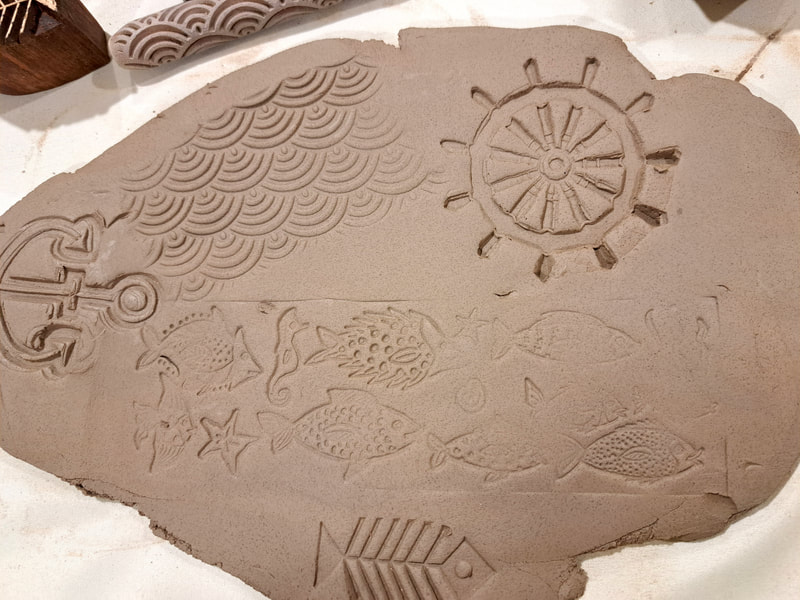
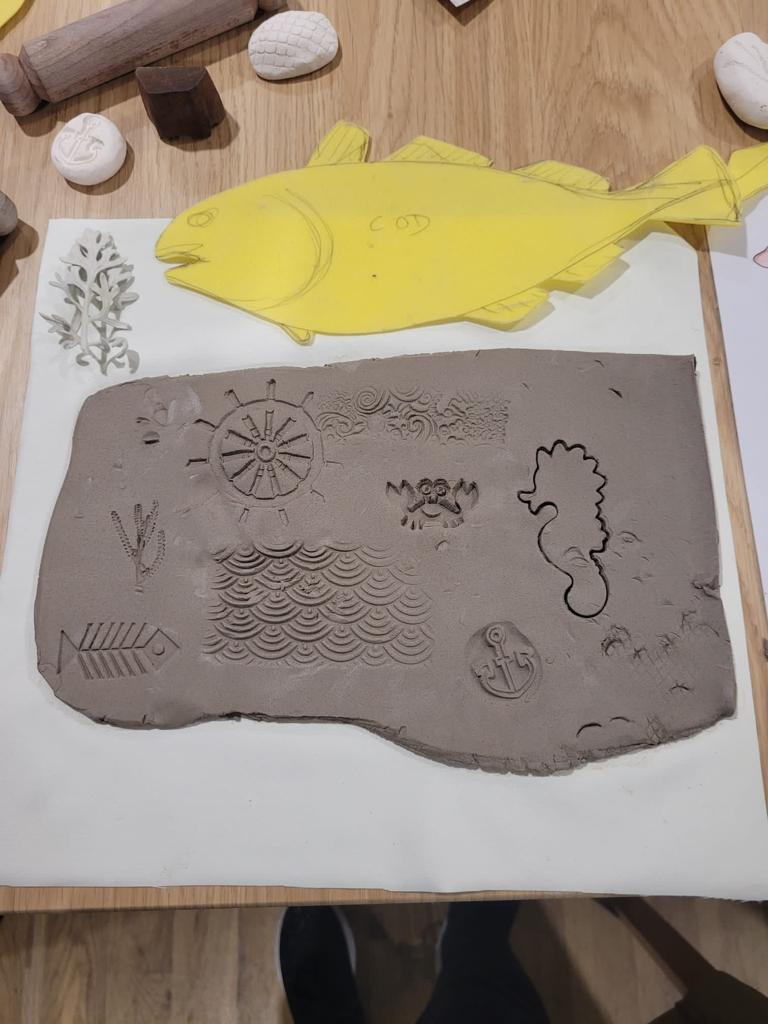


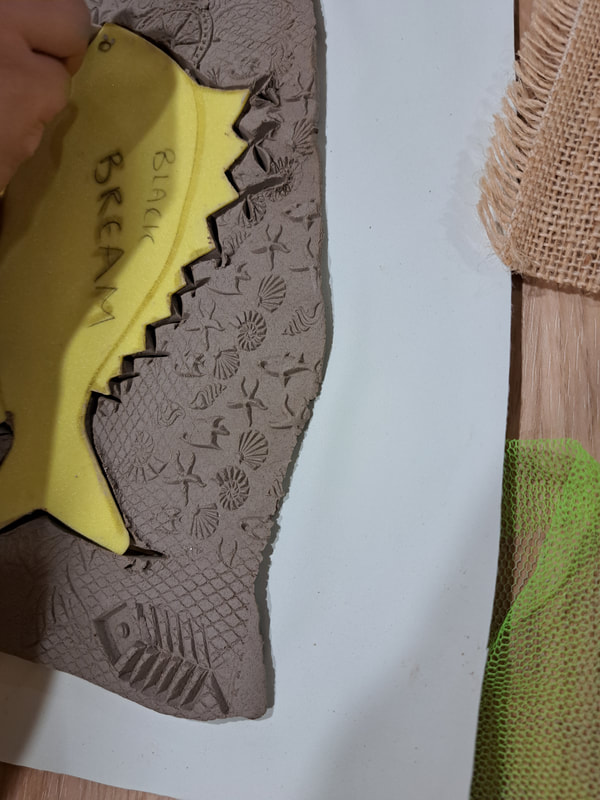












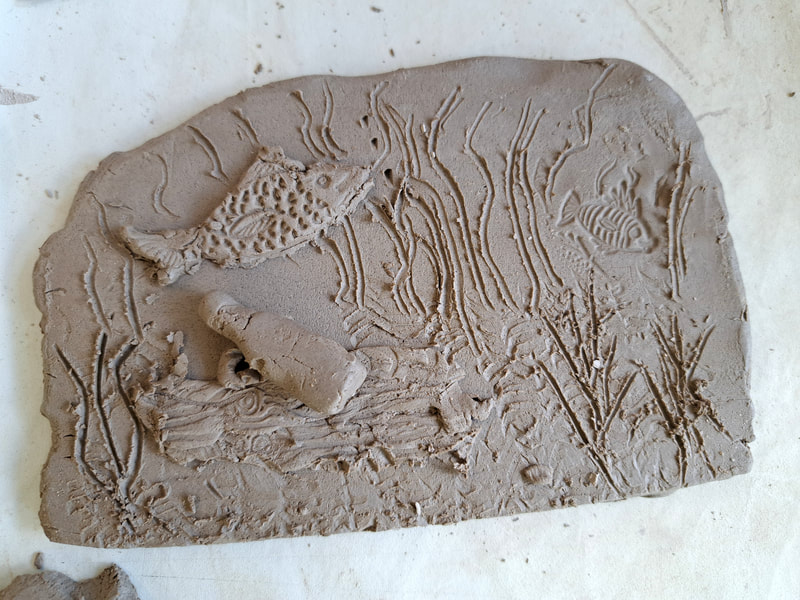



























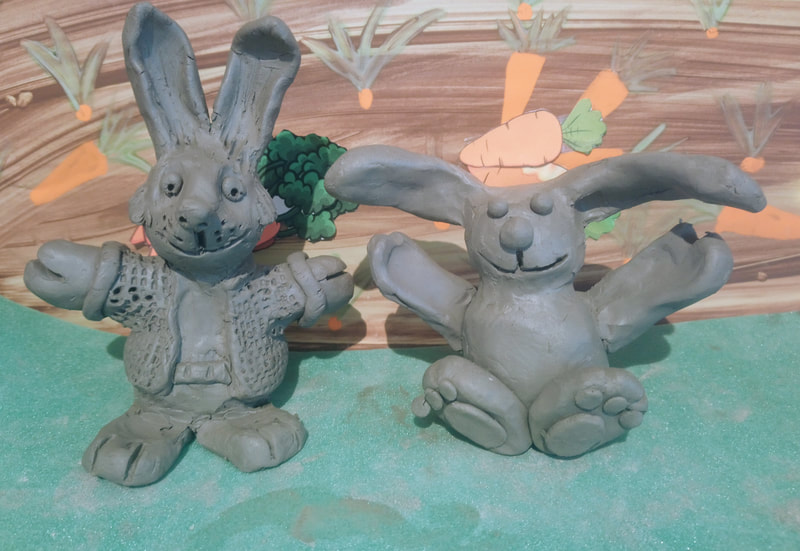
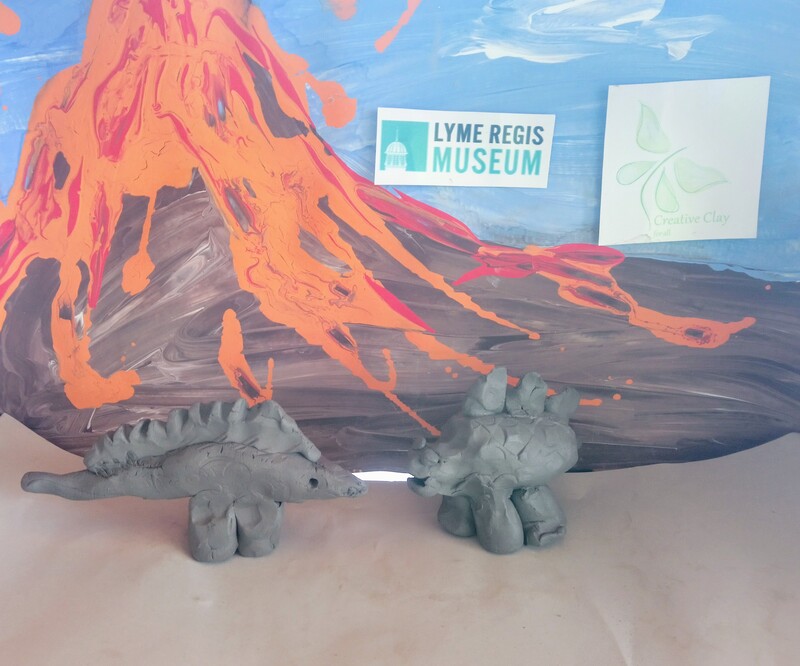
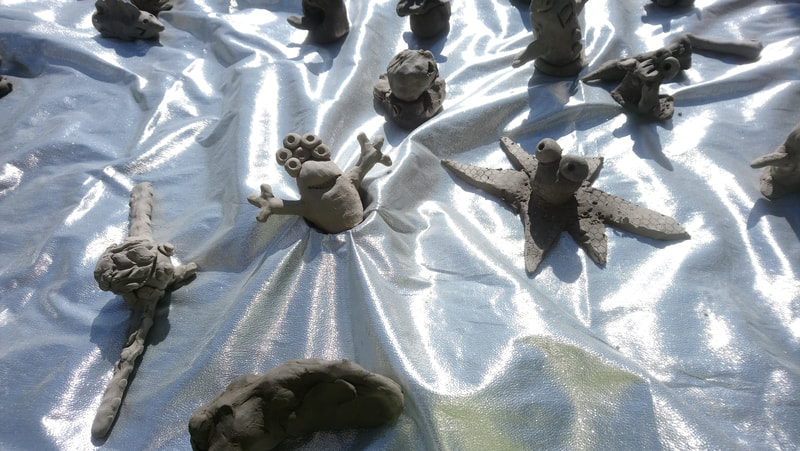



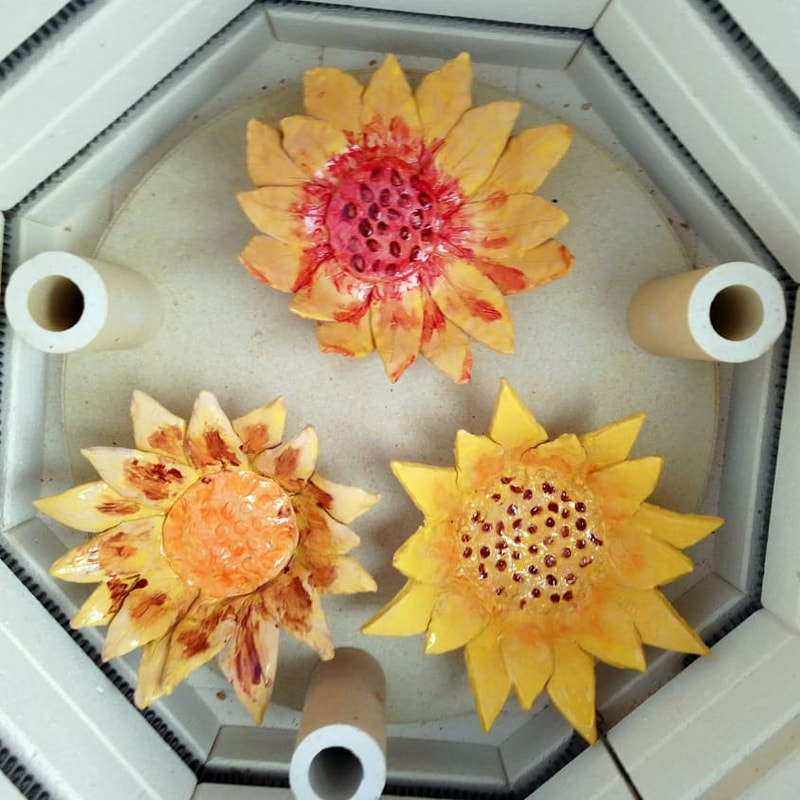




 RSS Feed
RSS Feed